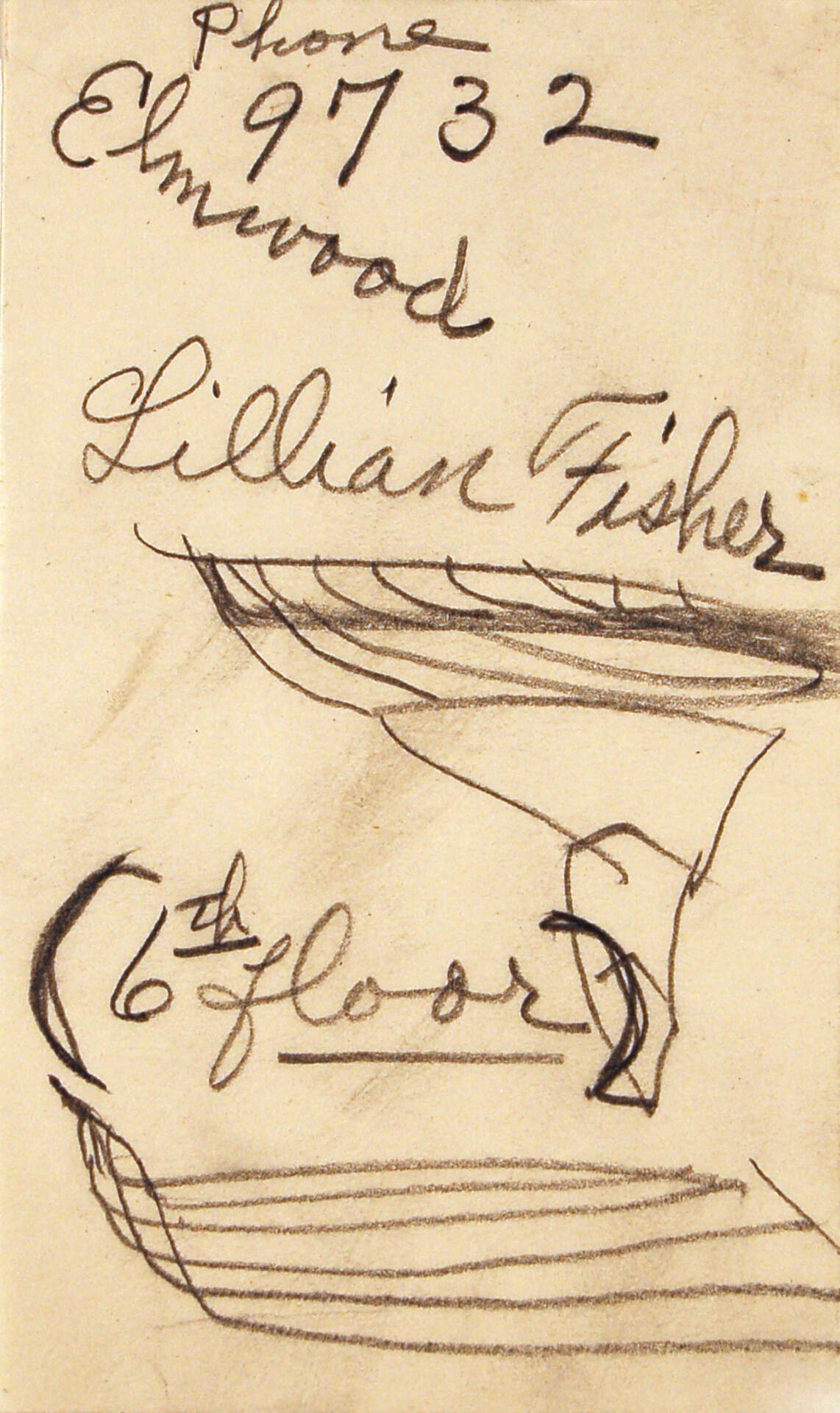Related to Charles E. Burchfield (1893-1967)Bertha Burchfield’s note for Charles E. Burchfield
undated
graphite on paper
5 x 3 inches
Charles E. Burchfield Archives, Gift of Harriet and Mortimer Spiller, 1976
In Bertha Burchfield's handwriting: "Phone / 9732 / Elmwood / Lillian Fisher / (6th floor)." Lillian Fisher was an artist the Burchfield's knew, in part, through the Art Institute of Buffalo and the Patteran Society.
Born in Russia, Lillian Yetta Fisher (1885-1973) came to the United States in 1902, and moved from Hartford, Connecticut to Buffalo in 1933 with her son Wilbur after the death of her husband, Jack Fisher. She enrolled in the Art Institute of Buffalo, which had opened in 1931, supported by public funds from the Works Progress Administration (WPA), as part of the Buffalo Education Service of the New York State Department of Education. Through her classes in sculpture and painting, she came to know artists including Charles Burchfield, Jean MacKay Henrich, Robert N. Blair, Joseph Orffeo, David Pratt, Walter Prochownik, James Vullo, and Paul J. Smith (now Director Emeritus, American Craft Museum). At the AIB, the “First Solo Show / Lillian Fisher / Sculpture and Paintings,” opened March 19, 1944. Two of her figurative sculptures were included in the Center’s historic exhibition, An Alternative Course: The Art Institute of Buffalo (1931-1956) presented in 2006 to mark the 75th anniversary of the founding of the Art Institute of Buffalo.
Fisher was also a member of the Patteran Society, established on May 12, 1933, by a rebellious group of artists and sympathizers to support modernism in art and to offer an alternative to the Buffalo Society of Artists, which was deemed too conservative and exclusionary. “The main purpose of the Society was to foster free and independent thought…” with a focus on supporting artists as individuals. (Martha Visser’t Hooft was among the founders.) On February 12, 1950, Charles Burchfield wrote: “P.M. to the Lillian Fisher opening – a large crowd – a very interesting show. While her oils are gay in color, there is an undercurrent of melancholy or tragedy (even more apparent in the sculpture) that seems to be social rather than individual.”
